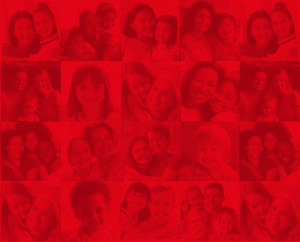Problematic Sexual Behavior in Children and Adolescents
Many CONTACT partners work with families of children engaging in problematic sexual behaviors. This can be a sensitive, confusing issue to navigate with parents. Many parents and children feel shame, fear, anger, and other emotions when problematic sexual behaviors (such as looking at or touching others’ private parts, excessive masturbation, etc.) are discovered. In this newsletter article, we hope to demystify the topic and give you some talking points to use with your families.
Sexual development begins in infancy and continues through adulthood. Children are naturally curious; they learn through play, touch, mimicking what they see, and interacting with others. Some sexual play/behavior is normal and healthy. For example, children might touch their private parts as they are exploring their own bodies. They might “play doctor” with a friend to see what another person’s private parts look like. Normative sexual play is typically motivated by curiosity and occurs among children roughly the same age. It generally decreases when parents or caregivers engage in teaching, limit-setting, and redirection.
Sometimes, however, children and youth engage in sexual behavior that is problematic for themselves and/or other children. Behavior can range from excessive masturbation to forced intercourse. It can be challenging to determine if a particular behavior is normative or problematic. Like other types of behavior, sexual behavior exists on a continuum ranging from normal and expected to concerning and problematic. When assessing where a child’s behavior falls along the continuum, consider these factors:
- Frequency, duration, and type of behavior (longer, frequent, and more intrusive or “adult-like” behaviors are generally more concerning)
- Age of other children involved (behavior that occurs among children of disparate ages or abilities are more concerning)
- Impact (or potential impact) of the behavior on the other(s) involved
- Responsiveness of the behavior to adult redirection or correction
- Presence or absence of force or coercion (which is problematic no matter the age difference between the children)
Problematic sexual behavior occurs across all cultures, socioeconomic groups, genders, and family circumstances. It is often impossible to pinpoint the reason or cause for an individual child’s problematic behavior. In general, though, researchers have identified categories of risk factors: child vulnerabilities such as developmental delays or problems with impulse control; family adversities including parental mental health problems, toxic stress, and lack of supervision; modeling of coercion (e.g., witnessing domestic violence); and modeling of sexuality such as sexual abuse or exposure to pornography.
Effective treatment for problematic sexual behavior exists. Treatment should build on the research-established factors that protect against problematic sexual behavior. Protective factors include modeling of healthy boundaries, parental supervision, protection from abuse or trauma, positive friendships, and adaptive coping skills. Evidence-based interventions for problematic sexual behavior include Problematic Sexual Behavior Cognitive Behavioral Therapy (PSB-CBT). To refer to CASGSL’s PSB program (serving kids ages 7 to 18), call 314-516-7330. We welcome referrals from our CONTACT partners and other community members.

